Butcher Block countertop question
finnhill
4 years ago
Featured Answer
Sort by:Oldest
Comments (40)
Chisos
4 years agoJoseph Corlett, LLC
4 years agoRelated Discussions
resource/recommendations - counter top butcher block for the prep
Comments (2)John Boos is well known for quality tops. Look at a local restaurant supply house for ordering. Michigan Maple is another well regarded manufacturer. You can look on their website for a local distributor. Craft Art is a manufacturer/retailer, and also known for their high quality and the number of different woods in which they can create countertops. Zebrawood end grain. Here is a link that might be useful: Craft Art...See MoreButcher block counter tops and waterlox
Comments (15)You've gotten good advice! I applied 2 coats of Waterlox Original to the underside of the Ikea slabs before they were cut to size. (A carpenter was cutting and installing them and I didn't want to have to move them afterwards.) I tried every application method I could think of - old t-shirt, foam brush, lambswool applicator, brush, etc. The foam brush (a wider one, 2" or so) worked best for me. Use a new brush for each coat. Do let it dry well in between coats, and be generous with the first few as it will be absorbed into the wood. You're going to want lots and lots of coats around the sink area - and probably a vapor barrier between the dishwasher and the underside of the butcher block. I ended up applying 2 coats of Original to the bottoms, then 3 coats of Original and 4 coats of Satin for a total of 7 on the tops and sides. I'd suggest more at the sink. Good luck - the Waterlox will make it look rich and honey colored!...See Morequartz or butcher block counter (island and wall counter)
Comments (3)I think butcher block on the island with quartz on perimeter will look and function better. If you use waterlox for it, you cannot cut on it. But it will give it a nice protective furniture finish. If you want to cut on it you need to use mineral oil, which is less permanent but repairable. If you cut on it, you will see marks on it, but you can sand it and re-oil over time. You can also use an oil based finish for the more natural look but not cut on it. That what I would do. If you search here you will see discussions of waterlox versus oil versus other products like osmo for wood island tops. Breezygirl highly recommends an osmo product that I am going to use on my wood island counter once it's installed....See MoreButcher block counter top
Comments (3)Yes, you should be concerned over the long term. Water will take its toll over time, not just on the wood, but on the glue that holds bb together. If you are considering this you might want to use marine varnish around the faucet cut outs especially. I can't post images right now, but one of my faves is of a maple butcher block island with a soapstone sink AND sink surround. How would you feel about having a bit of stainless surrounding your stainless farmhouse sink, about a foot on each side, then transitioning into bb? That surround will save you from a ton of maintenance and decay over time....See MoreSarah
4 years agoHU-527663426
4 years agotatts
4 years agoShannon_WI
4 years agolast modified: 4 years agoGannonCo
4 years agoHillside House
4 years agolive_wire_oak
4 years agolast modified: 4 years agoCreative Design Cabinetry
4 years agoM Miller
4 years agolast modified: 4 years agobry911
4 years agoMary Glickman
4 years agoNidnay
4 years agoMary Elizabeth
4 years agoredesign
4 years agobry911
4 years agodovetonsils
4 years agoAli Elyse
4 years agoAboutToGetDusty
4 years agoNidnay
4 years agoNidnay
4 years agoNidnay
4 years agoAboutToGetDusty
4 years agoJoseph Corlett, LLC
4 years agofinnhill
4 years agoSarah
4 years agotatts
4 years agoJoseph Corlett, LLC
4 years agoShannon_WI
4 years agoSouthernBelle ~
4 years agoljptwt7
4 years agoPatricia Colwell Consulting
4 years agoKarenmo
3 years agoJoseph Corlett, LLC
3 years agoKarenmo
3 years agolast modified: 3 years agoCheryl Hannebauer
3 years agobry911
3 years agoSouthernBelle ~
3 years ago
Related Stories
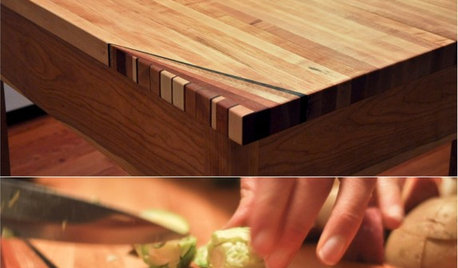
WOODWORKINGHow to Clean and Care for Your Butcher Block
Keep butcher block counters and boards looking sharp as a knife — and sanitized for safe food prep — with this advice from a pro woodworker
Full Story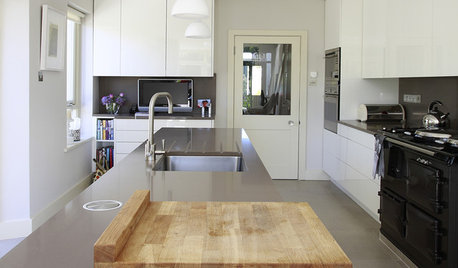
KITCHEN DESIGNButcher Block Makes the Cut for Holiday Kitchen Prep
Countertops and cutting boards will likely take a beating over the holidays. These butcher blocks have the chops to perform under pressure
Full Story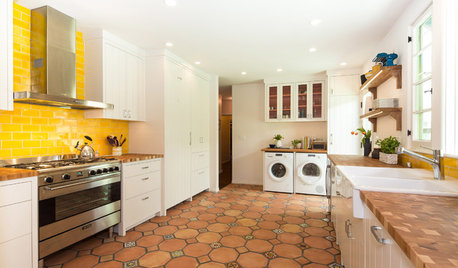
KITCHEN DESIGNNew This Week: 4 Surprising Backsplash and Countertop Pairings
Make your kitchen workspace stand out with colored ceramic tile, back-painted glass, butcher block and more
Full Story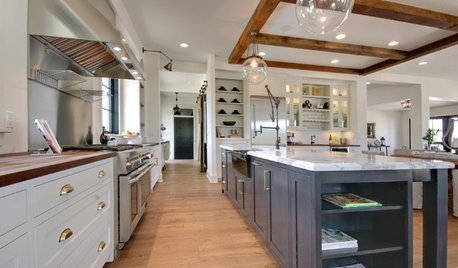
KITCHEN COUNTERTOPS10 Countertop Mashups for the Kitchen
Contrast or complement textures, tones and more by using a mix of materials for countertops and island tops
Full Story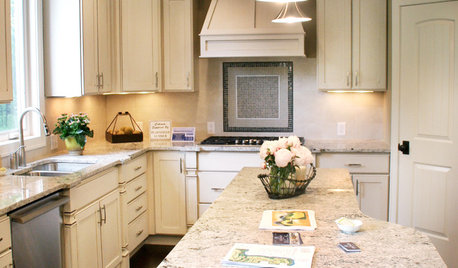
KITCHEN DESIGNKitchen Countertops 101: Choosing a Surface Material
Explore the pros and cons of 11 kitchen countertop materials. The options may surprise you
Full Story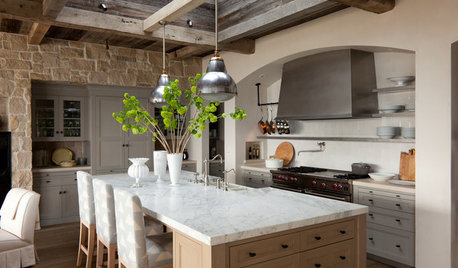
KITCHEN DESIGNHouzz Quiz: What Kitchen Countertop Is Right For You?
The options for kitchen countertops can seem endless. Take our quiz to help you narrow down your selection
Full Story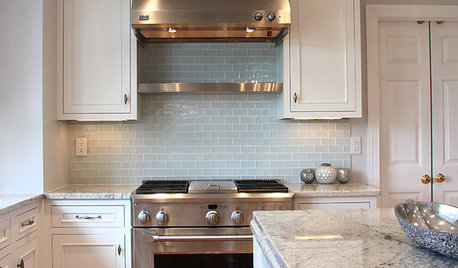
KITCHEN DESIGN5 Favorite Granites for Gorgeous Kitchen Countertops
See granite types from white to black in action, and learn which cabinet finishes and fixture materials pair best with each
Full Story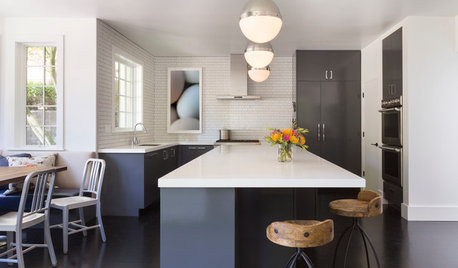
KITCHEN COUNTERTOPSWhy I Chose Quartz Countertops in My Kitchen Remodel
Budget, style and family needs all were taken into account in this important design decision
Full Story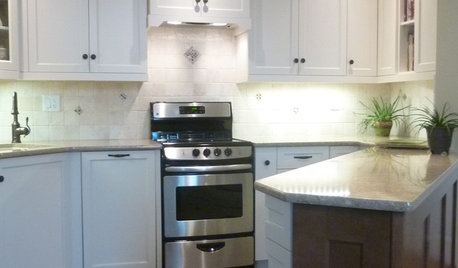
SMALL KITCHENSMore Cabinet and Countertop Space in an 82-Square-Foot Kitchen
Removing an inefficient pass-through and introducing smaller appliances help open up a tight condo kitchen
Full Story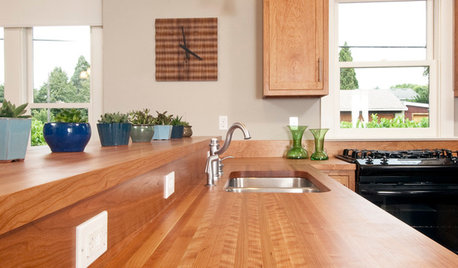
KITCHEN DESIGNWonderful Wood Countertops for Kitchen and Bath
Yes, you can enjoy beautifully warm wood counters near water sans worry (almost), with the right type of wood and sealer
Full StorySponsored
Central Ohio's Trusted Home Remodeler Specializing in Kitchens & Baths



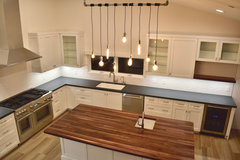




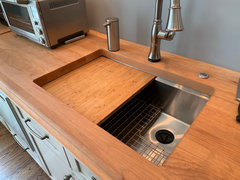
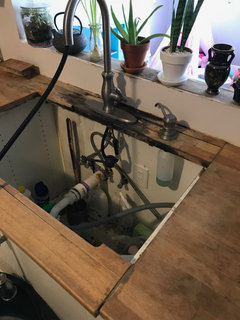




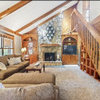
bry911